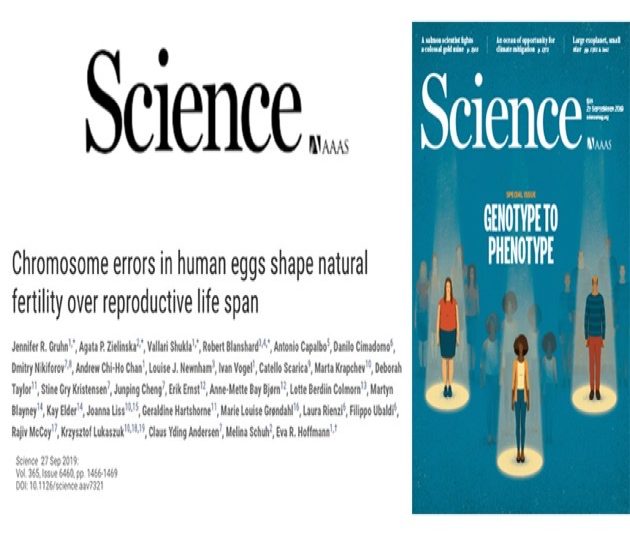
Chromosome errors in human eggs shape natural fertility over reproductive life span
Jennifer R. Gruhn, Agata P. Zielinska, Vallari Shukla,, Robert Blanshard, , Antonio Capalbo ,Danilo Cimadomo , Dmitry Nikiforov , Andrew Chi-Ho Chan ,Louise J. Newnham , Ivan Vogel , Catello Scarica , Marta Krapchev , Deborah Taylor , Stine Gry Kristensen , Junping Cheng , Erik Ernst , Anne-Mette Bay Bjørn , Lotte Berdiin Colmorn , Martyn Blayney , Kay Elder , Joanna Liss , Geraldine Hartshorne , Marie Louise Grøndahl , Laura Rienzi , Filippo Ubaldi , Rajiv McCoy , Krzysztof Lukaszuk , Claus Yding Andersen , Melina Schuh , Eva R. Hoffmann
Science 27 Sep 2019: Vol. 365, Issue 6460, pp. 1466-1469 – DOI: 10.1126/science.aav7321
Abstract
Chromosome errors, or aneuploidy, affect an exceptionally high number of human conceptions, causing pregnancy loss and congenital disorders. Here, we have followed chromosome segregation in human oocytes from females aged 9 to 43 years and report that aneuploidy follows a U-curve. Specific segregation error types show different age dependencies, providing a quantitative explanation for the U-curve. Whole-chromosome nondisjunction events are preferentially associated with increased aneuploidy in young girls, whereas centromeric and more extensive cohesion loss limit fertility as women age. Our findings suggest that chromosomal errors originating in oocytes determine the curve of natural fertility in humans.